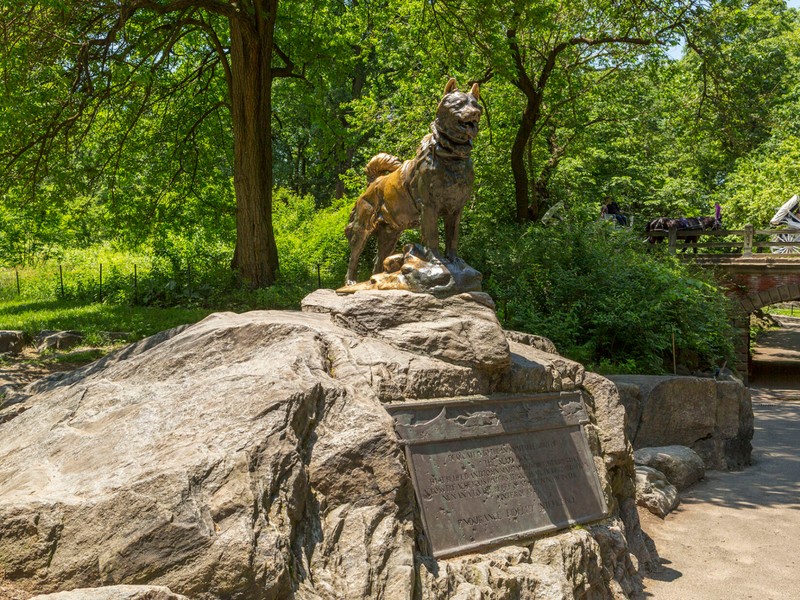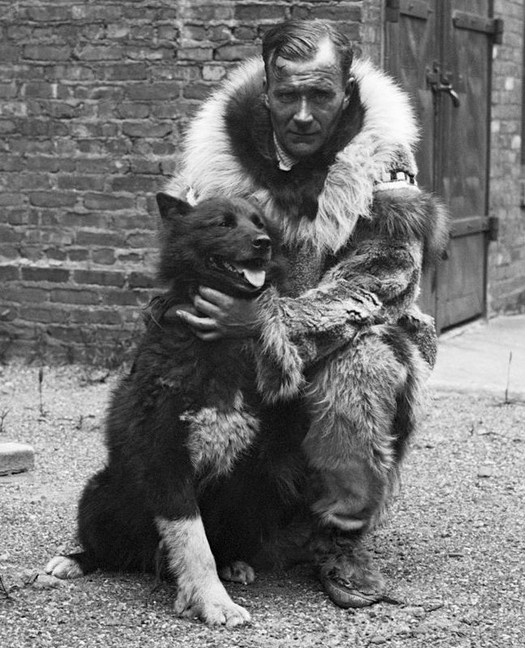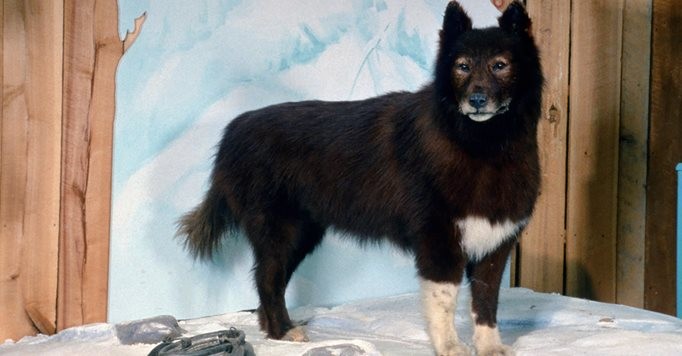Balto Statue
Introduction
Text-to-speech Audio
Images
Balto Monument

Gunnar Kaasen and Balto

Balto on display at the Cleveland Museum of Natural History

Backstory and Context
Text-to-speech Audio
In January 1925, a deadly diphtheria outbreak struck the small, remote Alaskan town of Nome. The nearest supply of life-saving anti-toxin serum was located in Anchorage, several hundred miles to the southeast. The harsh Alaskan winter made air and sea travel impossible. The only hope of getting the medicine to Nome in a timely fashion was to ship it by rail to Nenana, the closest train station to Nome, and from there use dogsled teams to complete the long overland journey. Once the precious, twenty-pound, fur-cloaked package of anti-toxin serum arrived at the train station in Nenana, twenty sled teams composed of over 200 dogs relayed the medicine round-the-clock through feet of snow, gale-force winds, and subzero temperatures for 674 miles. Completing the final fifty-three-mile leg of the journey to Nome was a sled team led by musher Gunnar Kaasen and a Black and white Siberian Huskey named Balto. The team arrived in Nome on the morning of February 2. In all, the dogsled teams completed the nearly 700-mile journey in just over five days. In the process, not one vial of anti-toxin serum was damaged.
While it was unfolding, the race to get the life-saving anti-toxin serum to Nome garnered both national and international attention. After successfully completing his leg of the journey, Balto became an overnight celebrity and, along with Kaasen, embarked on a tour of the United States. Not long after, a group of New York City artists led by renowned portraitist Cecilia Beaux began calling for the creation of a statue in honor of Balto and the other sled dogs that helped save so many lives in Nome. Under the auspices of the Municipal Arts Society, they began raising money, mostly through private donations. The group commissioned Brooklyn-born sculptor Frederick George Richard Roth, best known for his bronze portrayals of living animals, to design it. On December 17, 1925, only ten months after the famous journey, the statue was unveiled in Central Park. Made of bronze, the statue—a likeness of Balto standing proudly and sporting a sleigh harness— is anchored into a natural rock outcropping. On the face of the outcropping is mounted a bronze dedicatory plaque with a sled dog team motif. In attendance at the unveiling ceremony was Kaasen and Balto. To this day, Balto’s statue is the only one in Central Park to have had its honoree present at the dedication ceremony. After the statue’s unveiling, the National Academy of Design awarded Roth the 1925 Speyer Prize for the work.
Balto lived out his later years at the Brookside Zoo (now the Cleveland Metroparks Zoo), where countless visitors came to catch a glimpse of the famous canine. In 1933, at the age of fourteen, he died of natural causes. Balto’s body was taxidermically preserved and put on display at the Cleveland Natural History Museum, where it and an exhibit on him can still be viewed today. Several decades later, director Steven Spielberg’s Amblin Entertainment introduced a new generation to the story of famous pooch and the race to get the life-saving medicine to Nome with his 1995 animated film, Balto.
Sources
"Balto." New York City Department of Parks and Recreation. The City of New York. Web. 10 November 2020 <https://www.nycgovparks.org/parks/central-park/monuments/75>.
"Balto: The Hero Dog of Nome, Alaska." Cleveland Museum of Natural History. Web. 10 November 2020 <https://www.cmnh.org/balto>.
Sain-Baird, Jessica. "The Past, Present, and Future of Balto." Central Park Conservancy. 4 January 2018. Web. 10 November 2020 <https://www.centralparknyc.org/articles/balto>.
https://www.centralparknyc.org/articles/balto
https://en.wikipedia.org/wiki/Balto
